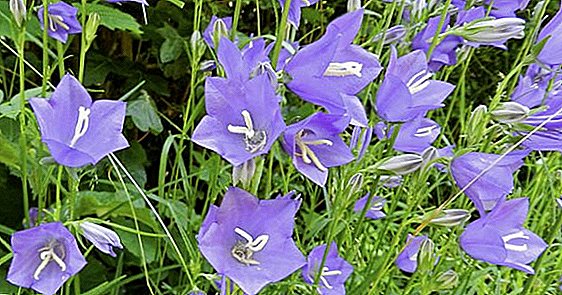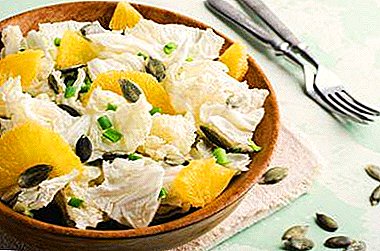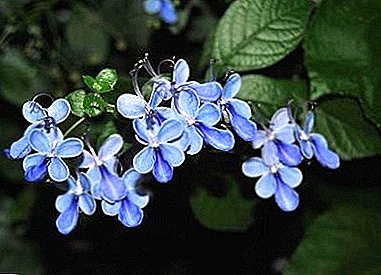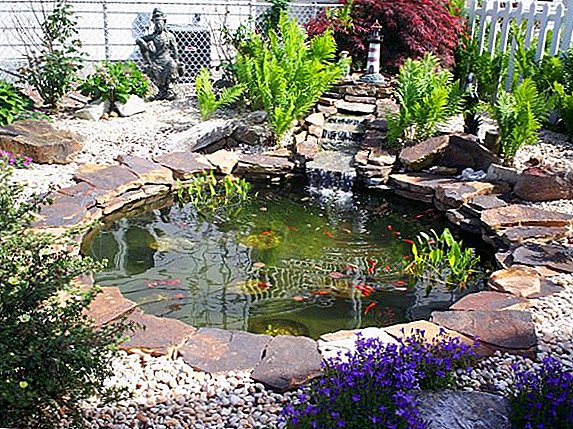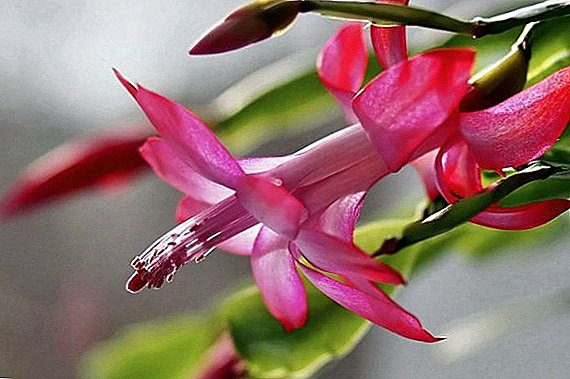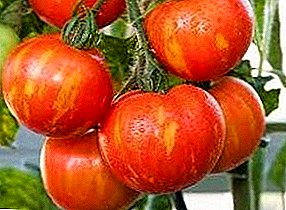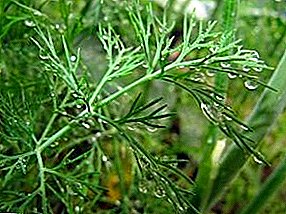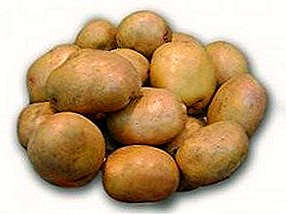
Choosing potato varieties is not an easy task. It is necessary to take into account your taste preferences, and the ripeness of the conditions, the conditions at the place of storage, the type of soil on the site.
A good solution in the middle group will be a successful product of Belarusian breeders - Breeze.
A full description of the variety, especially the agrotechnics of potato Breeze, its tendency to diseases, as well as the possibility of infestation by insect pests can be found in our article.
Origin
The breeze was derived by specialists of the Potato Science Center of the Academy of Sciences of Belarus. In 2005, patented and transferred to the varietal tests. Just a year later, Breeze was added to the Belarusian one, and in 2009 - to the Russian register of potato varieties, grown in different countries.
Potato Breeze: variety description and photos
| Grade name | Breeze |
| general characteristics | medium early table variety of Belarusian breeding and high yield |
| Gestation period | 65-80 days |
| Starch content | 12-16% |
| Mass of commercial tubers | 100-150 gr |
| The number of tubers in the bush | 8-12 |
| Yield | up to 620 c / ha |
| Consumer quality | good taste, poor stewiness |
| Recumbency | 97% |
| Skin color | yellow |
| Pulp color | yellow |
| Preferred growing regions | any type of soil |
| Disease resistance | moderately resistant to late blight and scab |
| Features of growing | agricultural technology is standard, responds well to fertilizers, does not require excessive use of chemicals to protect against insects |
| Originator | RUE "Scientific and Practical Center of the National Academy of Sciences of Belarus on Potato and Fruit and Vegetable Growing" |
Breeze refers to medium early table varieties. Tuber ripening takes an average of 60 to 80 days from planting. Is different high yield and gives up to 620 c / ha.
Breeze tubers are large, oval, with yellow smooth skin and many shallow eyes. The average weight of a tuber is about 120 grams. Stability - 97%.
And in the table below you can see what the yield and percentage of keeping quality of tubers in other potato varieties are:
| Grade name | Yield (kg / ha) | Tuber bath (%) |
| Breeze | up to 620 | 97 |
| Lemongrass | 195-320 | 96 |
| Melody | 180-640 | 95 |
| Margarita | 300-400 | 96 |
| Alladin | 450-500 | 94 |
| Courage | 160-430 | 91 |
| Beauty | 400-450 | 94 |
| Grenada | 600 | 97 |
| The hostess | 180-380 | 95 |
Shrub usually medium height, with wide leaves and red-violet flowers. The flesh is yellow, it retains its color after preparation. This variety has an average starch content (12-16%).
On how to properly store peeled tubers, as well as keep the product in the fridge, read the special articles of the site.
The amount of starch in potato tubers of other varieties:
| Grade name | Starch |
| Breeze | 12-16% |
| Lady claire | 12-16% |
| Innovator | up to 15% |
| Labella | 13-15% |
| Bellarosa | 12-16% |
| Riviera | 12-16% |
| Karatop | 11-15% |
| Veneta | 13-15% |
| Gala | 14-16% |
| Zhukovsky early | 10-12% |
| Lorch | 15-20% |
Photo gallery of potato varieties Breeze:




TO merits Varieties Breeze include:
- high keeping quality;
- pleasant sweetish taste;
- attractive type of tubers;
- resistance to viral diseases
(twisting leaves, striped and wrinkled mosaics) and potato cancer (Synchytrium endobioticum fungus).
Main limitations:
- susceptibility to the golden nematode;
- low resistance to late blight and scab.
Cultivation, reproduction and storage
Planting potatoes begin when the earth warmed to 7 ° C at a depth of 10-12 cm. Usually this happens by the end of April - the beginning of May.
To soil breeze undemandingthat allows you to grow this variety in all regions of the Russian Federation.
Adequate watering will help to get a decent harvest in any soil. Planting density is varied from 550 tubers per hundred for light, and 400 for heavier, loamy soils.
Best of all, the Breeze potato variety grows on irrigated beds.
 This variety responds well to mineral fertilizers. Preference is better to give ammonium sulfate or superphosphate to maintain optimum soil pH. How and when to feed potatoes, as well as how to do it properly when planting, read in the articles of our website.
This variety responds well to mineral fertilizers. Preference is better to give ammonium sulfate or superphosphate to maintain optimum soil pH. How and when to feed potatoes, as well as how to do it properly when planting, read in the articles of our website.
Like any potato variety, Breeze can propagate vegetatively (parts of a tuber, sprouts, branches, division of a bush) and seeds.
With the vegetative method, it is possible to get a bountiful harvest more quickly, but after 4-5 years (of reproductions), the yield decreases, and the taste of potatoes begins to deteriorate.
To update the planting material, you need to periodically purchase new seed tubers.
Planting seeds makes it possible in the first year to harvest from small nodules, from which in the second year it will grow great potatoes first reproduction.
The potato variety breeze is different good keeping qualityIts tubers are resistant to mechanical damage. Special storage conditions are not required; a dry basement with an air temperature of +2 to + 5 ° C will do. Read more about storage in the winter, in boxes and in time, in the materials of the site.
Diseases and pests
Breeze bred viral resistant and some fungal diseases (verticillus, Alternaria, Fusarium). Such dangerous diseases as late blight and scab are less susceptible than some other varieties, but still require preventive measures.
Use organic fertilizer carefully! This is one of the frequent ways in which actinomycete spores cause scab!
Late blight considered the most insidious of solanaceous diseases. The disease is caused by a pathogenic fungus; accordingly, treatment with fungicides is required to prevent it.
It is strictly impossible to use for planting material with signs of disease. An important prevention measure is regular weeding.
Scab potatoes are able to destroy up to 70% of the crop in the affected areas by increasing waste and reducing keeping quality.
Seed material is also lost, as the surviving tubers lose eyes. To combat scab applied:
- seed tuber treatment with fungicides (Fungazil 100 SL, Aquaflo, etc.);
- application of fertilizers that support a weak acid reaction of the soil;
- crop rotation with on-site planting of beans, cereals or cruciferous crops.
The ripening time of Breeze tubers makes it susceptible to the attack of a golden potato nematode.
As a result of the parasitism of this microscopic worm on the roots and leaves of potatoes, the tubers are not tied or remain completely small, the greens dry out. The nematode forms cysts in which eggs can live for up to 10 years.
To prevent infection, you should thoroughly wash the seed tubers, immediately dig up and burn the affected plants. You can use drugs such as heterofos or carbamide. Planting corn or legumes helps to clear the land of nematodes!
 Fighting the Colorado potato beetle and its larvae very often becomes a real problem for gardeners.
Fighting the Colorado potato beetle and its larvae very often becomes a real problem for gardeners.We bring to your attention a series of materials about folk remedies and chemical preparations that can cope with the problem.
Good yield, decent taste, minimum requirements for chemical protection and storage make Breeze a worthy representative of middle-aged varieties both in a small summer cottage and in a farm.
We also suggest you to get acquainted with other varieties that have a variety of ripening terms:
| Superstore | Early maturing | Medium early |
| Farmer | Bellarosa | Innovator |
| Minerva | Timo | Pretty boy |
| Kiranda | Spring | American |
| Karatop | Arosa | Crown |
| Juvel | Impala | Manifesto |
| Meteor | Zorachka | Elizabeth |
| Zhukovsky early | Colette | Vega | Riviera | Kamensky | Tiras |


